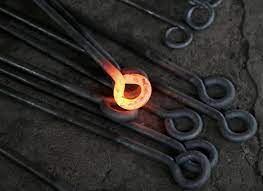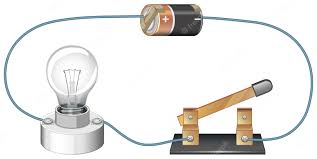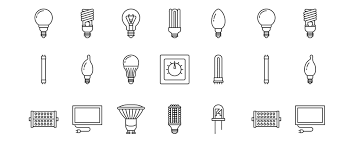How Light Bulbs Work: Lighting up the World
Introduction: Have you ever pondered the inner workings of a light bulb? Over the course of a century and a half, these remarkable innovations have been responsible for the illumination of our homes, schools, and public spaces. In today’s post, we are going to delve into the fascinating science that lies behind light bulbs and figure out how they are able to bring illumination into our lives.

The Basic Components:
There are three primary components that make up a light bulb: the filament, the glass bulb, and the base. A special material, such as tungsten, is used to make the filament, which is a thin wire. The filament is shielded from the environment by the glass bulb, which completely encloses it. The base is the component of the light bulb that makes the connection to an electrical circuit, thereby enabling the light bulb to be supplied with electricity.
Let There Be Light!
When we turn on a light switch, electricity travels from the power source to the base of the light bulb and then into the filament of the light bulb. The filament, much like the wire in a toaster, will become increasingly hot as an electric current travels through it. When it gets hot enough, the filament will start to glow, which will cause it to produce light. That is the process by which a light bulb produces light!

The Magic of Incandescence:
The phenomenon known as incandescence is responsible for the production of light by the glowing filament that is contained within an electric light bulb. When it reaches a high temperature, the filament starts to give off thermal radiation, which includes visible light. This is analogous to the way that heated objects such as hot metal rods emit a glow that is reddish in colour. When the filament is heated to a higher temperature, the light that is produced by it is both brighter and whiter.
The Importance of Gas vs. Vacuum :
Either an empty space (also known as a hoover) or a distinct gas can be found inside the glass bulb. In the past, light bulbs would have a hoover inside to stop the filament from igniting due to the presence of oxygen. These days, a lot of light bulbs are filled with gases like argon or nitrogen. These gases contribute to the filament having a longer lifespan and increase the light’s overall luminosity.

Turning Things On and Off with a Switch:
The switch that controls whether or not a light bulb is illuminated is connected to the base of the bulb. The electrical circuit is either finished or broken depending on which way the switch is flipped. When the circuit is finished being completed, electricity will flow through the filament, causing the light bulb to become illuminated. The flow of electricity is disrupted when the circuit is broken, which results in the light bulb going out.

Different kinds of light bulbs:
There are many variations of light bulbs that can be purchased today. The filament in standard incandescent bulbs is heated up until it glows, which is how the bulbs get their name. On the other hand, they are not very energy-efficient, which is why many places are moving away from using them. The use of light-emitting diode bulbs (LEDs) and compact fluorescent light bulbs (CFLs) is becoming increasingly common. They generate light through a variety of different technologies and are significantly more energy-efficient.
As a result of their ability to supply us with artificial light, light bulbs have fundamentally altered the way in which we live. They function by producing light by heating the filament, which consists of a glass bulb, and their bases are made up of filaments. Because there are many different kinds of light bulbs, we have the option of selecting those that are better for the environment and last significantly longer. When you turn on a light switch for the next time, you’ll be able to understand how it operates and appreciate the incredible science that lies behind it.
Some important Question and Answers
What is a light bulb? A light bulb is a device that converts electrical energy into light.
What are the parts of a light bulb? The parts of a light bulb are:
- Filament: A thin wire that is made of a material that has a high melting point, such as tungsten.
- Glass bulb: A glass bulb that encloses the filament.
- Inert gas: An inert gas, such as nitrogen or argon, that is filled in the glass bulb.
- Base: A base that is used to connect the light bulb to an electrical outlet.
How does a light bulb work? A light bulb works by converting electrical energy into heat. When an electric current passes through the filament, the filament heats up and glows. The amount of light that a light bulb produces depends on the amount of current that flows through the filament. The brighter the light, the more current that flows through the filament.
What are the different types of light bulbs? There are two main types of light bulbs: incandescent light bulbs and fluorescent light bulbs.
- Incandescent light bulbs are the most common type of light bulb. They work by heating up a thin wire, called a filament, until it glows. Incandescent light bulbs are not very efficient, and they use a lot of energy.
- Fluorescent light bulbs are more efficient than incandescent light bulbs. They work by passing an electric current through a gas, which causes the gas to emit light. Fluorescent light bulbs last longer than incandescent light bulbs and use less energy.
- What are the advantages and disadvantages of incandescent light bulbs? The advantages of incandescent light bulbs are:
- They are inexpensive.
- They are easy to find.
- They come in a variety of shapes and sizes.
The disadvantages of incandescent light bulbs are:
- They are not very efficient.
- They use a lot of energy.
- They have a short lifespan.
- What are the advantages and disadvantages of fluorescent light bulbs? The advantages of fluorescent light bulbs are:
- They are more efficient than incandescent light bulbs.
- They last longer than incandescent light bulbs.
- They produce less heat than incandescent light bulbs.
The disadvantages of fluorescent light bulbs are:
- They are more expensive than incandescent light bulbs.
- They can flicker when they are turned on.
- They contain mercury, which is a hazardous material.
- What are the different types of fluorescent light bulbs? There are two main types of fluorescent light bulbs:
- Compact fluorescent light bulbs (CFLs): CFLs are the most common type of fluorescent light bulb. They are smaller and more efficient than traditional fluorescent light bulbs.
- Linear fluorescent light bulbs: Linear fluorescent light bulbs are longer and more traditional than CFLs. They are often used in commercial settings.
What are the different ways to dispose of light bulbs? Light bulbs should be disposed of properly. Incandescent light bulbs can be recycled. Fluorescent light bulbs contain mercury, so they should be disposed of at a hazardous waste facility.
What are some safety tips for using light bulbs? Here are some safety tips for using light bulbs:
- Never touch a light bulb that is turned on.
- Be careful when replacing a light bulb.
- Do not use a light bulb that is cracked or broken.
- Dispose of light bulbs properly.
- What are some interesting facts about light bulbs? Here are some interesting facts about light bulbs:
- The first light bulb was invented by Thomas Edison in 1879.
- The first light bulb was made of carbonized bamboo.
- The first light bulb only lasted for 13.5 hours.
- Today, light bulbs can last for thousands of hours.
- Light bulbs are used in homes, businesses, and other places all over the world.